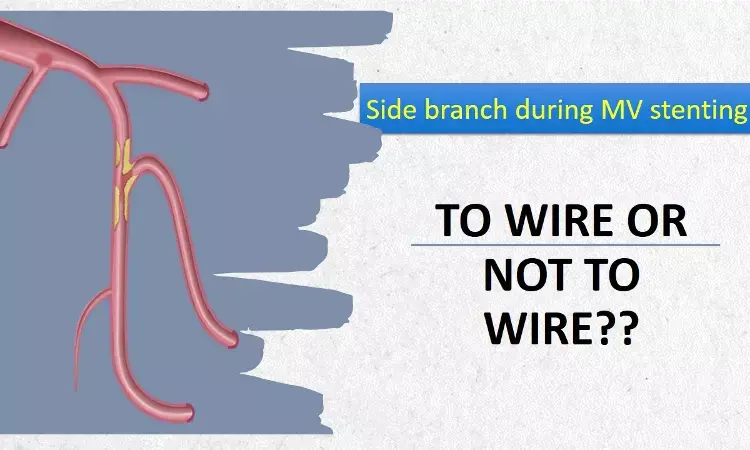- Home
- Medical news & Guidelines
- Anesthesiology
- Cardiology and CTVS
- Critical Care
- Dentistry
- Dermatology
- Diabetes and Endocrinology
- ENT
- Gastroenterology
- Medicine
- Nephrology
- Neurology
- Obstretics-Gynaecology
- Oncology
- Ophthalmology
- Orthopaedics
- Pediatrics-Neonatology
- Psychiatry
- Pulmonology
- Radiology
- Surgery
- Urology
- Laboratory Medicine
- Diet
- Nursing
- Paramedical
- Physiotherapy
- Health news
- Fact Check
- Bone Health Fact Check
- Brain Health Fact Check
- Cancer Related Fact Check
- Child Care Fact Check
- Dental and oral health fact check
- Diabetes and metabolic health fact check
- Diet and Nutrition Fact Check
- Eye and ENT Care Fact Check
- Fitness fact check
- Gut health fact check
- Heart health fact check
- Kidney health fact check
- Medical education fact check
- Men's health fact check
- Respiratory fact check
- Skin and hair care fact check
- Vaccine and Immunization fact check
- Women's health fact check
- AYUSH
- State News
- Andaman and Nicobar Islands
- Andhra Pradesh
- Arunachal Pradesh
- Assam
- Bihar
- Chandigarh
- Chattisgarh
- Dadra and Nagar Haveli
- Daman and Diu
- Delhi
- Goa
- Gujarat
- Haryana
- Himachal Pradesh
- Jammu & Kashmir
- Jharkhand
- Karnataka
- Kerala
- Ladakh
- Lakshadweep
- Madhya Pradesh
- Maharashtra
- Manipur
- Meghalaya
- Mizoram
- Nagaland
- Odisha
- Puducherry
- Punjab
- Rajasthan
- Sikkim
- Tamil Nadu
- Telangana
- Tripura
- Uttar Pradesh
- Uttrakhand
- West Bengal
- Medical Education
- Industry
Jailing side branch is beneficial to secure its patency, finds JACC study

Despite the favorable outcomes of the 1-stent strategy for coronary bifurcation lesions, it is associated with side branch (SB) occlusion, which may lead to serious adverse clinical events. The benefits of SB wire jailing in this 1-stent strategy remain unclear and is variably used by operators across the world.
Now for the first time, providing a scientific evidence about the benefits of this approach, authors Choi et al have found that wire jailing at the SB was associated with a lower rate of final SB occlusion following MV stenting in patients with severe stenoses at the SB or MV. These results were recently published in JACC Cardiovascular Interventions Journal.
The purpose of leaving the wire in the side branch is said to be twofold: first, it helps maintain flow in the side branch after main vessel stent deployment, and second, it aids rewiring of the side branch, particularly if flow is diminished or lost. This theory is challenged by notions like chances of guide catheter advancement during wire removal, wire reaming, or wire entrapment after high-pressure balloon inflation.
In the present study, outcomes from 1,890 patients from the COBIS III registry who underwent bifurcation stenting with a single stent were assessed. Forty-three percent had wire jailing and, perhaps surprisingly, as many as 57% did not. Ultimate side branch occlusion occurred in 1.8% of those with a jailed wire and 2.9% of those without.
Wire jailing at the SB was a significant protective factor for SB occlusion after MV stenting on multivariate analysis and was significantly associated with a lower incidence of SB occlusion in patients with significant stenoses (≥60%) at the SB or MV. Among these patients, the occlusion rate was 5.1% vs 11.3%, significant both clinically and statistically.
During follow-up (median 52 months), the incidence of target lesion failure was not significantly different between wire jailing and non–wire jailing.
Following abrupt closure of SB during MV stenting, restoration of abrupt closure occurred in 48% of cases in the wire-jail group vs 22% in the no-wire-jail group. "This is proof that a jailed wire really is very useful for helping the operator rewire an occluded side branch", notes David Hildick-Smith in an accompanying editorial.
Are there any drawbacks?
The investigators also looked at the possible adverse effects of having a wire jailed in the side branch. They did not find any cases of broken or retained wires in the coronary circulation, or any major complications related to wire jailing, and this is very reassuring.
Source: JACC CI:
1. J Am Coll Cardiol Intv. 2022 Feb, 15 (4) 443–455
2. J Am Coll Cardiol Intv. 2022 Feb, 15 (4) 456–457
MBBS, MD , DM Cardiology
Dr Abhimanyu Uppal completed his M. B. B. S and M. D. in internal medicine from the SMS Medical College in Jaipur. He got selected for D. M. Cardiology course in the prestigious G. B. Pant Institute, New Delhi in 2017. After completing his D. M. Degree he continues to work as Post DM senior resident in G. B. pant hospital. He is actively involved in various research activities of the department and has assisted and performed a multitude of cardiac procedures under the guidance of esteemed faculty of this Institute. He can be contacted at editorial@medicaldialogues.in.
Dr Kamal Kant Kohli-MBBS, DTCD- a chest specialist with more than 30 years of practice and a flair for writing clinical articles, Dr Kamal Kant Kohli joined Medical Dialogues as a Chief Editor of Medical News. Besides writing articles, as an editor, he proofreads and verifies all the medical content published on Medical Dialogues including those coming from journals, studies,medical conferences,guidelines etc. Email: drkohli@medicaldialogues.in. Contact no. 011-43720751


